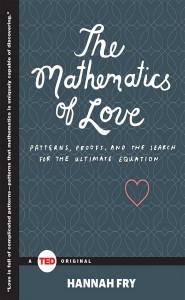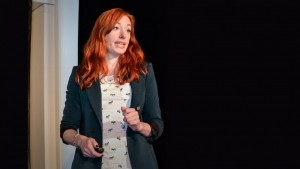
Mathematics the science of love and human connection!
Finding real love is not easy—just being beautiful or attractive is not enough, but is it even mathematically likely? Mathematician Hannah Fry shows patterns in how we look for love, and gives her top three tips (verified by maths) for finding that special someone.
Complicated love patterns can be discovered by Mathematics pattern. Mathematics is a crucial tool for understanding love by negotiating lovematics. In this must-have for anyone who wants to better understand their love life, and defining how lovers might feel from a set of simple equations is impossible. But that doesn’t mean that mathematics isn’t a crucial tool for understanding love. Love is often complicated and baffling, sometimes infuriating and always interesting mysteries says Maths expert Hannah Fry.

Love, like most things in life, is full of patterns, including sexual patterns and how we choose who to message for dating in the internet. And mathematics is ultimately the study of patterns predicting the weather, the fluctuations of the stock market, the movement of planets or the growth of cities. These patterns twist and turn and warp and evolve just as the rituals of love do.
Mathematics is ultimately the study of patterns – from predicting the weather to the fluctuations of the stock market, the movement of planets or the growth of cities. These patterns twist and turn and warp and evolve just as the rituals of love do,’ according to the book publishers Simon & Schuster.
In ‘The Mathematics of Love: Patterns, Proofs, and the Search for the Ultimate Equation’, brought out as part of TED Books, the author uses her s to study patterns in human behaviour from riots and terrorism to trade and shopping. Simple mathematical rules, according to the author, can be of great use in life and love. ‘That’s why all mathematicians make famously excellent erotic lovers (and dancers). Who knew maths could give you such a lovely and moral way to live?’
The book pursues to answer several questions like what are the chances of finding love, how important is beauty, how to maximise a night on the town and how to live happily after marriage. It also talks about online dating, the dating game, the maths of sex and settling down. According to Fry, her aim was not to ‘replace any of the other excellent sources available on the science of human connection’ but ‘offer a different perspective on the most talked-about subject in the history of human existence, using mathematics as a guide’. Her traditional story of man meets woman. ‘This is simply because having two clear groups targeting each other can help to make the maths a lot simpler. The choice of examples aside, though, all the results and tips in the book are general enough to apply to any gender and sexuality,’ writes Fry, a complexity scientist from University College London’s Centre for Advanced Spatial Analysis. From evaluating the best strategies for online dating to defining the nebulous concept of beauty, Fry tries to prove that maths is a surprisingly useful tool to negotiate the complicated, often baffling, sometimes infuriating, always interesting, mysteries of love.
Fry’s first TED talk attracted more than 500,000 views across all TED channels and evolved into her first book ‘The Mathematics of Love’. Her advice on online dating, ‘When choosing a profile picture, you should play up to your strengths and be unique and whatever makes you different – including the things that some people might not like. So be proud of that bald patch, show off that ill-advised tattoo, and get that belly out.’ ‘The most successful relationships are the ones with a really low negativity threshold where couples moan and complain and work together to constantly repair even the tiniest issues between them. As a result these couples don’t bottle up their feelings, as they had already vented their feelings and do not lose their temper or blow a gasket.
Mathematicians resolve the truth or falsity of conjectures by mathematical proof. When mathematical structures are good models of real phenomena, then mathematical reasoning can provide insight or predictions about nature. Through the use of abstraction and logic, mathematics developed from counting, calculation, measurement and the systematic study of the shapes and motions of physical objects. Practical mathematics has been a human activity for as far back as written records exist. The research required to solve mathematical problems can take years or even centuries of sustained inquiry.
In 2002, Jason Padgett, 44, from Tacoma, Washington, a self-described “woman caser” who woke up as a maths genius, after he was knocked-out during a late night mugging has said he would not change the brutal attack although it turned his life into turmoil. Next day he started seeing lines around objects and began studying maths and physics, drawing intricate mathematical diagrams and developed Savant Syndrome- in which a normal person suddenly becomes skilled in maths, art or music after brain injury, obsessive compulsive disorder, depression and post-traumatic stress disorder, and locked himself away for years.
The Mathematics of Love by Hanna Fry A TED original
Simon Suchster


